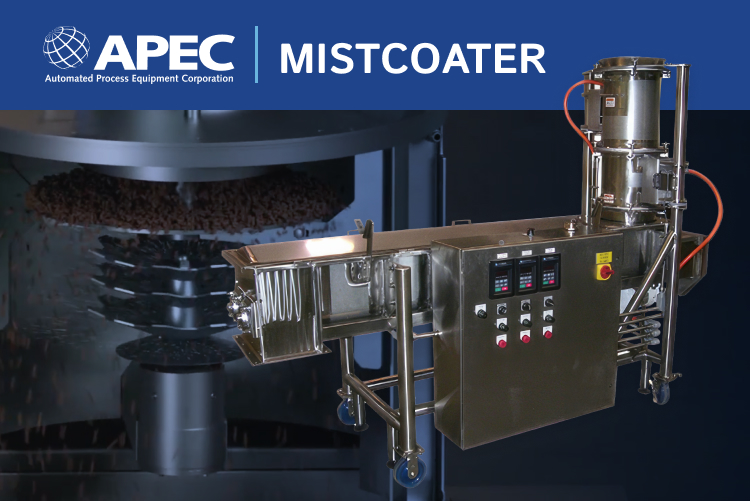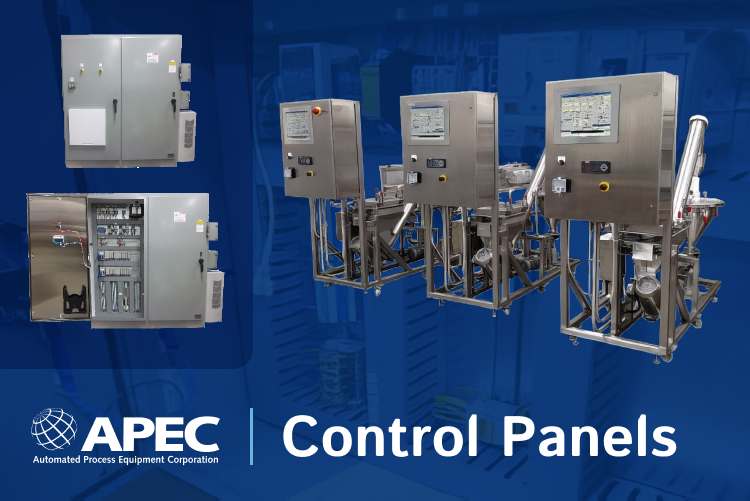In the previous post, we discussed common problems that can occur with the start of a micro-ingredient system, including ingredient bins and feeders. The latter half of the system is generally more complex, and more issues usually arise here. In this blog post we’ll cover micro-ingredient scales, conveyance and controls, and what you can do to design the most effective system.
7 Ingredient System Planning Pitfalls for Micro-Ingredient Scales, Conveyance and Controls
1. Miscalculated Scale Error
To find the right scale for your formula, you’ll need to to add all of the possible ingredients and the quantity of each. This will tell you the size of the scale that you need, but you also need to consider the margin of error. If the scale can accurately measure within +/-5 grams and the required accuracy of the formula is 1%, you won’t be able to measure 10 grams of a micro-ingredient, because the possible error will be 50%.
Reduce error and improve efficiency. Download the Engineer’s Guide to Weighing and Batching >
2. Miscalculated Resolution and Accuracy
The scale resolution is also important to consider. The minimum increment a scale will display is generally one 10,000th (1/10,000) of the total scale capacity. So, a 100 kg scale would display in increments of .01 kg. If this isn’t suitable for your accuracy measurements or your feeder output, you may have to reconsider your scale capacity. Using the 100 kg scale example, if your feeder puts out more than .01 kg of material a second, and the control system can only time shut-off to within a second, the system will be inaccurate by this amount.
3. Incorrect Scale Hopper Design
The type of materials, the available height in the facility, and the downstream conveyance must all be considered to design the right scale hopper. Limited vertical space in some facilities can prevent the use of some types of scale hoppers, like a conical scale. Use of a roll-over tub with a slide gate may be a better choice then for facilities with lower ceilings. However, since a roll-over tub discharges material all at once, this will only work if the downstream conveyance or next process can accommodate all materials. If your materials are better suited to pneumatic conveying, like fine powders, then a conical scale hopper will transition into the pneumatic system easier. If you prefer to skip conveyance and discharge into the mixer, a conic scale hopper or roll-over tub will work.
4. Cycle Time Doesn’t Match Mixer Time
For the micro ingredient system to reach maximum efficiency, the cycle time of each ingredient—including the time it takes for the materials to fill, settle, and discharge—must align with the batch mixing time of all ingredients. If, for example, it takes 30 seconds to fill, measure and discharge each ingredient in a 10 ingredient mix, it will take 300 seconds total to weigh the material in the scale so the mixer could be waiting for the weighing process to complete. If the mixing time only takes 150 seconds, it will be idle half the time. To solve this problem and reach maximum efficiency, you might use two scales, each with 5 ingredients.
This will require some careful calculations, as the fastest cycle time time, average time, and slowest time will vary. The times for each ingredient will also vary by density and amount. Be sure to allow some room for timing variation.
5. Vibration Interference
Vibration can be used i in a micro ingredient system to prevent bridging, ratholing, and other no-flow conditions in bins and hoppers. It’s also desirable to keep the different parts of your system close together to prevent the need for extraneous conveyance. However, if scales are placed too close to vibrating equipment, it can cause fluctuation of the scale reading. If the scale readings are dampened to eliminate the fluctuating readout, the scales may appear to be working normally and showing normal readouts, but the process duct may be weighing incorrectly. In this case, interference through vibration may be to blame.
6. Conveyance Contamination
The most efficient type of conveyance is through gravity, however this is not always an option, especially for facilities with low vertical clearance. In these cases, you might use pneumatic, belt or drag conveyors. When using belt or drag conveyors, it’s important to prevent contamination from one batch to the next. Materials, powder or coatings that become stuck on the belt can not only damage the belt and cause it to stick or slide, but can also contaminate new material. Use scrapers or brushes to prevent material build-up on the conveyor. It may also be advisable to run a flush material through the conveyor to clean off the residual material.
7. Slow or Damaged Controls
The micro ingredient system cannot function properly without direction from the right controls. The control system, whether you are using a PLC or PC, should be able to sample each scale quickly and stop feeders without a long delay, otherwise overfilling will ruin the batch. The system should also be powerful enough to control all scales, feeders, mixers, metered liquids, and other functions with accuracy. Finally, the control system should be enclosed if dust, moisture, heat, vibration or other hazards are a concern. Often, a PC will be used outside the factory floor for extra processing and data storage power, and communicate with a more durable PLC directly controlling equipment.
With different ingredients and recipes there are different challenges for each part of the micro ingredient system. If you have questions about the needs and capabilities of your micro ingredient system or ingredient automation system, take a look at the Engineer’s Guide to Weighing and Batching. This guide addresses the issues from this and the previous blog post in more detail, as well as many others not discussed here.








One thought on “Part 2: Ingredient System Planning Pitfalls For Micro-Ingredient Scales, Conveyance and Controls”
Comments are closed.